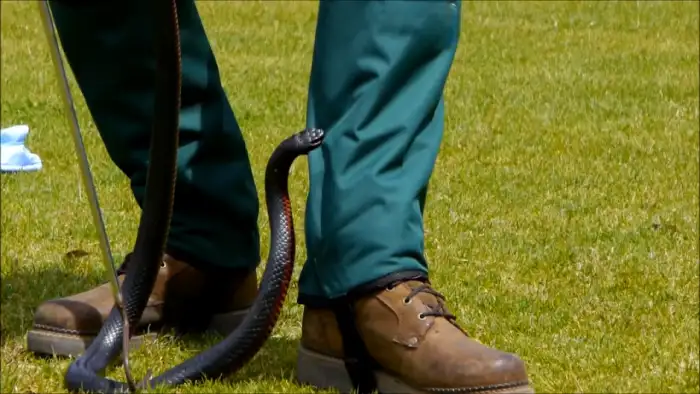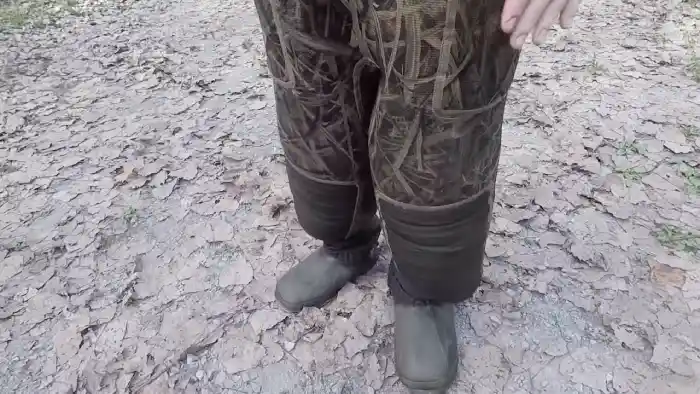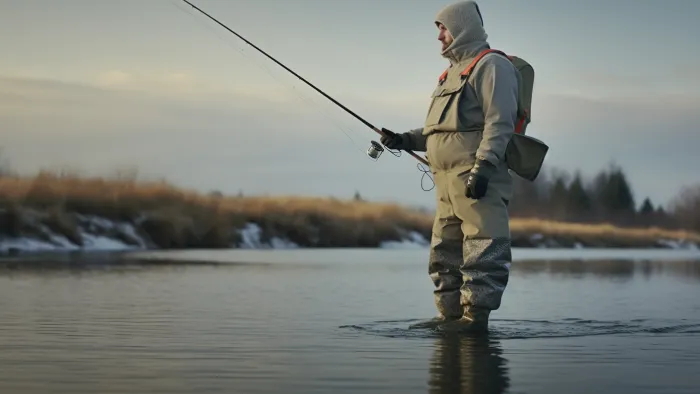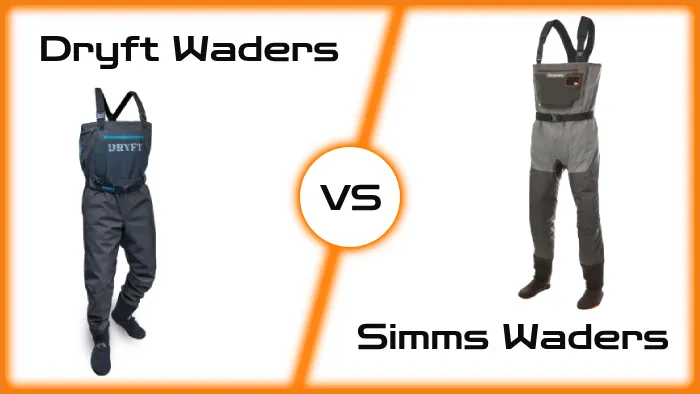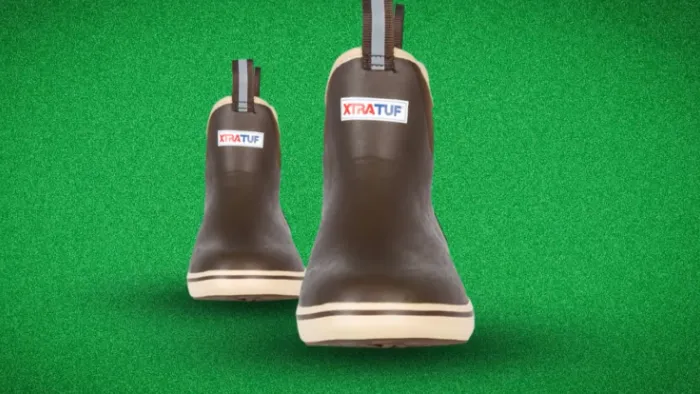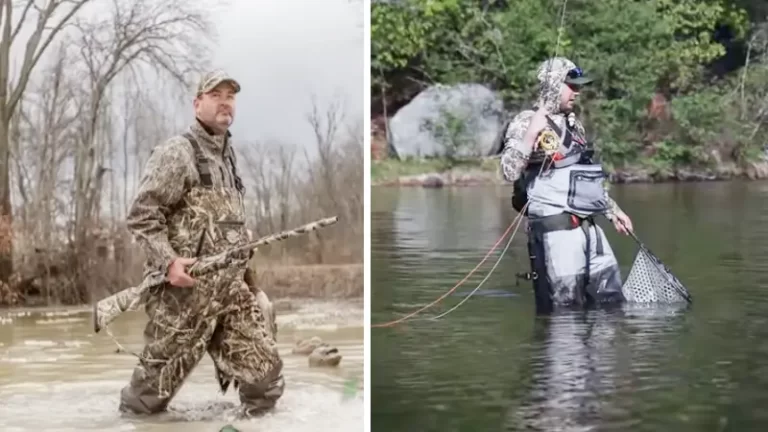Can Snakes Bite Through Waders: Follow Fishing Safety Guidelines
Have you ever wondered if those fishing waders you’re wearing offer enough protection from a potential snake encounter as you cast your line and wait patiently for a bite?
Snakes can bite through fishing waders. Waders are primarily designed to keep your feet and legs dry, and a snake bite can easily penetrate the material. While waders can insulate you from the cold, they do little to defend against snake bites, stingray stings, and puncture wounds.
Even hip waders made of rubber can be penetrated by snake fangs, although not all snakes have fangs strong enough to go through rubber boots. Snakes can put a lot of weight behind their strike, so you should take precautions when fishing in areas where snakes may be present.
So, let’s begin and arm ourselves with the knowledge to fish safely and confidently without the fear of snake bites.
How Can You Avoid Snake Bites When Fishing with Waders?
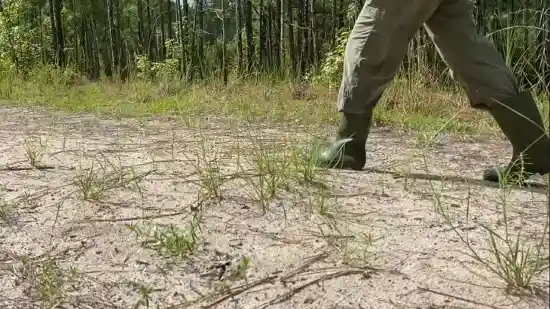
When fishing with waders, you can avoid snake bites in several ways. Here are a few guidelines:
- Wear snake-proof boots
- Stay alert and watch your step
- Avoid reaching into concealed areas
- Make noise and vibrations
- Choose fishing spots wisely
- Learn to identify local snakes
- Carry a snakebite kit
No 01: Wear Snake-Proof Boots
Investing in high-quality snake-proof boots that cover your feet and lower legs will ensure you can fully enjoy your outdoor adventures without worrying about snake bites. These boots are specifically designed to resist snake bites and provide an extra layer of protection.
With snake-proof boots, you can confidently explore snake-infested areas, such as fishing spots, knowing that your feet and lower legs are shielded from potential bites. Snake-proof boots have several benefits:
- Protection against snake bites
- Peace of mind while exploring
- Increased safety in snake habitats
Snake-proof boots are constructed using durable materials and innovative designs that make it nearly impossible for snakes to penetrate. They typically feature thick and puncture-resistant uppers, reinforced toe caps, and sturdy outsoles.
These features ensure that even the most venomous snakes cannot bite through the boots, providing you with the utmost safety during your fishing adventures.
No 02: Stay Alert and Watch Your Step
Stay vigilant and watch your surroundings, as a staggering 70% of snake bites occur when people accidentally step on or near snakes.
When wearing fishing waders, you should remember that while they protect against water and other hazards, they may not be completely snake-proof.
Therefore, staying alert and watching your step when wearing fishing waders where snakes may be present is crucial. Take your time and carefully scan the area before stepping, especially when walking through tall grass, bushes, or rocky areas.
No 03: Avoid Reaching into Concealed Areas
Be cautious and inspect hidden spots near the water before blindly reaching into them, using a snake hook or stick to give any lurking snakes a chance to retreat. Snakes can hide in crevices, logs, or other concealed areas near the water, making it important to take precautions.
To ensure your safety, follow these guidelines:
- Always carry a snake hook or stick to inspect concealed areas.
- Give the snake a chance to retreat before proceeding.
- Avoid reaching blindly into crevices or logs without first inspecting them.
- Be aware of your surroundings and watch for any signs of snake presence.
- Stay alert and cautious when near water, as snakes may be attracted to these areas.
No 04: Make Noise and Vibrations
Shake things up a bit by stomping your feet and clapping your hands to create noise and vibrations, giving those slithering creatures a heads up before you strut your stuff near the water. Snakes are highly sensitive to vibrations and rely on this sense to detect potential threats.
This precautionary measure is particularly important when moving through snake-prone areas. The vibrations generated by your actions will travel through the ground, allowing the snakes to perceive your approach and avoid any potential encounters.
Remember, snakes have a natural aversion to human presence, and by creating noise and vibrations, you can effectively minimize the chances of a snake bite while wearing fishing waders.
No 05: Choose Fishing Spots Wisely
Explore the surrounding area and seek out fishing spots that offer a serene and picturesque setting, ensuring a more enjoyable and tranquil experience near the water.
When selecting fishing locations, it’s essential to consider the likelihood of encountering snakes. Avoid areas with dense vegetation, rocky crevices, or known snake habitats to minimize the risk. Conduct thorough research on the region or consult with local authorities to gain insight into snake activity in the area.
By doing so, you can make an informed decision and choose fishing spots that are less likely to harbor snakes. Opt for serene and picturesque settings, as these areas are generally less attractive to snakes.
No 06: Learn to Identify Local Snakes
Immerse yourself in the fascinating world of local snakes, as learning to identify these slithering creatures will make you a true snake whisperer and fill you with awe and wonder. Familiarizing yourself with the types of snakes commonly found in your fishing area is essential for your safety.
By understanding their appearance, habits, and preferred habitats, you can recognize and avoid potentially dangerous encounters. To assist you in this endeavor, here is a table presenting some common local snakes:
| Snake Species | Appearance |
| Eastern Diamondback | Large, dark brown with diamond-shaped pattern |
| Rattlesnake | Diamond-shaped pattern and a rattle at the end of its tail |
| Cottonmouth | Heavy-bodied, dark with a white mouth |
| Copperhead | Rusty-colored with hourglass-shaped bands |
Take note of these distinctive characteristics and consult local resources for more detailed information. Remember, knowledge is power when it comes to identifying and safely interacting with snakes in your fishing area.
No 07: Carry a Snakebite Kit
Make sure you’re always prepared for the unexpected by carrying a snakebite kit that can provide immediate treatment in case of a slithery surprise. Snakebite kits are essential for outdoor enthusiasts, as they contain basic first aid supplies specifically designed for snake bites.
Here are four reasons why carrying a snakebite kit is crucial:
- Rapid response: Snakebite kits allow for quick and efficient treatment, minimizing the time between the bite and medical assistance. This can significantly reduce the risk of complications and potential long-term effects.
- Immediate relief: These kits often include items such as suction devices, tourniquets, and antiseptic wipes. These supplies can help alleviate pain, prevent venom spread, and reduce the chances of infection.
- Peace of mind: Having a snakebite kit handy can provide a sense of security and confidence when exploring snake-prone areas. Knowing that you have the necessary tools to handle a snakebite emergency can ease anxiety and allow you to enjoy your outdoor activities.
- Assistance for others: Carrying a snakebite kit not only benefits you but also enables you to help others in need. By being prepared and knowledgeable in snakebite first aid, you can potentially save lives and make a positive impact in emergency situations.
Prevention is essential, but being prepared with a snakebite kit can be a lifesaver when encountering venomous snakes in the wilderness.
How Do You Deal with Snake Bites with Waders On?
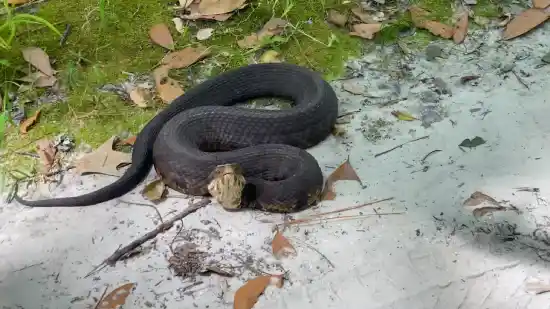
Stay calm and remember, even with your waders on, knowing how to deal with a snake bite is crucial to protect yourself and minimize the venom’s impact. If you find yourself in this situation, the first step is to seek immediate medical help.
While still in your waders, try to immobilize the affected limb using a splint, sling, or any available materials. Keeping the bitten limb below the level of your heart can slow down the venom’s circulation.
Contrary to popular belief, attempting to suck out the venom with your mouth or using a suction device is ineffective and potentially harmful.
Avoid removing your waders to minimize snake access and slow venom spread. Stay still and wait for medical professionals to provide appropriate treatment for snake bites.
Are there any specific colors or patterns of fishing waders that can deter snakes?
Certain colors or patterns of fishing waders don’t specifically deter snakes. Blend in with your natural surroundings by wearing waders in colors or patterns that snakes are less likely to notice or be provoked by.
It is always advisable to choose colors that match the environment to avoid startling or provoking snakes inadvertently. Here are four tips to help you choose the right colors or patterns for your fishing waders:
- Opt for earthy tones such as olive green, brown, or tan to mimic the natural colors of the surrounding vegetation.
- Avoid vibrant or contrasting colors like bright red, yellow, or white, as they may attract unwanted attention from snakes.
- Consider using camouflage patterns that mimic the natural patterns found in your fishing environment.
- Stay away from shiny or reflective materials that can catch the snake’s attention and potentially provoke them.
What to do if a snake swims toward you while fishing?
If a snake happens to swim towards you while you’re enjoying your time by the water, stay calm and slowly move away while keeping an eye on it.
Snakes are remarkable swimmers, and giving them the space they need is essential. Avoid sudden movements or attempts to touch or capture the snake, as this can provoke aggression.
Maintain a safe distance and observe the snake from a secure location. If you are fishing with waders, calmly swim away while maintaining visual contact.
Remember, snakes are generally not aggressive toward humans unless provoked. If you retreat calmly and cautiously, you can ensure your safety while still appreciating the incredible sight of a snake in its natural aquatic environment.
Protect Yourself from Snake Bites When Fishing with Waders
When fishing with Waders, it’s crucial to be vigilant and take precautions to avoid snake bites. Remember to stay calm and remove yourself from the snake’s vicinity if it approaches.
While there’s no definitive evidence that certain colors or patterns of fishing waders can deter snakes, it’s always advisable to wear waders in neutral colors.
If you happen to get bitten by a snake while wearing waders, seek immediate medical attention, as snake bites can be life-threatening.
Stay safe and enjoy your fishing adventures.

